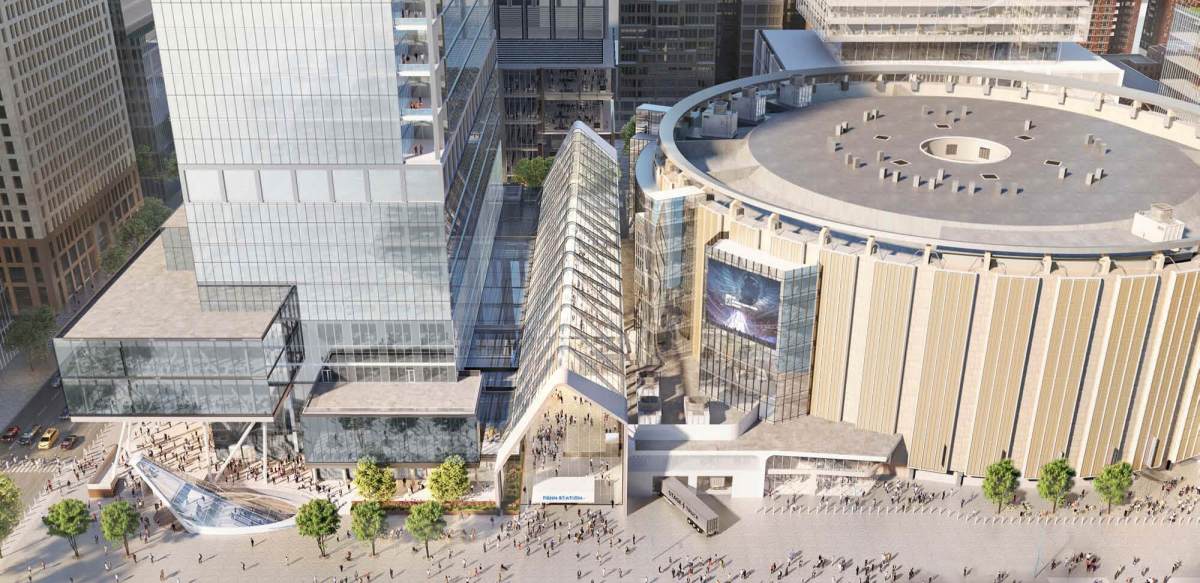It would surprise most New Yorkers to learn that, by the end of this month, the State of New York is poised to approve the largest development project in the history of New York City. Larger than the World Trade Center redevelopment of Hudson Yards, the 18-million-square-foot-plus project around Penn Station would include 10 new skyscrapers without going through the City’s typical land use process.
In addition to usurping the City’s ability to decide what is built where in the five boroughs, the State also plans to take any new taxes from the buildings for its own so that it can fund an update of Penn Station without paying to fix up the decrepit transit hub itself.
What do city residents get for this land and money grab? 529 units of permanently affordable housing – out of 1,798 total units – in a development large enough to yield 10,000. Instead of this desperately needed housing, we get millions of square feet of office space. Even before the Omicron wave, only 28 percent of New York office workers were back in the office – a number very few experts expect to ever get back to 100 after the pandemic accelerated the shift to remote work.
So where did this plan come from? The scheme uses a little-known process called General Project Planning, which ostensibly allows the State to grant development rights unilaterally through the Empire State Development Corporation in order to create tax revenue in the name of the public good.
But that power granted for a virtuous public purpose was abused for a personal benefit, unsurprisingly, by Governor Cuomo when he proposed this project a few years ago. Cuomo aggressively pushed the Penn Station plan after his campaign war chest was lined with donations from mega-developer Vornado, which will experience an unprecedented windfall at the site from new development rights worth billions of dollars.
And now Cuomo’s plan is hurtling forward, despite the fact that the City Planning Commission refuses to support it in its current form. There is no guarantee of how much tax revenue will be created, no agreement made with Vornado for payments toward transit improvements, nor even an agreement on the size and design of the buildings. This deal was originally billed as the way to pay for Penn Station’s improvements, but we don’t even know what those improvements will ultimately cost.
Not only is this a terrifying precedent, but the City will lose out on property taxes that pay for hospitals, schools, and public safety as we face crises across the board.
But perhaps the most harmful aspect of the plan is how little housing is included. Senators Krueger and Hoylman have done so much to improve the existing plan and incorporate more affordable housing, which originally offered even 400 fewer affordable units than the current proposal. Senator Hoylman has also worked closely with local social service organizations to provide feedback to ESD about the intense need for increased supportive housing, safe haven beds, and social services in any future development.
But we can all agree that 400 affordable units is a drop in the bucket: To say New York City is suffering from a lack of affordable housing is a dramatic understatement. Our population gained 629,000 residents in the last decade, according to the most recent census. We added just over 200,000 units of housing during that time, and the pandemic slowed new housing construction, dropping new annual construction by 4,600 units to 20,200 in 2020. Our decade-long housing crisis is only getting worse as New York continues to center the interests of the real estate industry over making meaningful gains in affordable housing.
Homelessness in New York City reached the highest levels since the Great Depression in recent years. The number of homeless students in the city could fill Yankee Stadium twice. Thankfully the eviction moratorium kept families housed during the worst of the pandemic, but since the Governor allowed the moratorium to expire last month, we are on the verge of a wave of evictions. New York’s unemployment rate is double the national average, and one-in-four renters missed at least one rent payment since March 2020.
Estimates are that we will have to build at least half-a-million units of housing by the end of the decade just to keep up with expected population growth. We could easily double that number before making a real impact for working-class people, depending on how many of the new units are affordable to lower-income families.
Yet here we are, about to build offices we do not need instead of affordable housing we desperately do, and lose prime space for apartments forever. And this is in an area that is also in major need of supportive housing for a surging homeless population. In short, the State may be about to sign off on an epic public policy mistake with many of the details still unknown.
Empire State Development cannot approve the current Penn Station plan. We need housing, not commercial office space. If this plan is not stopped in its tracks, our city will not only lose out on tax revenue for local services, but we will miss the opportunity to build thousands of new affordable units and begin to reverse our affordable housing crisis. Pause the Penn plan.


















